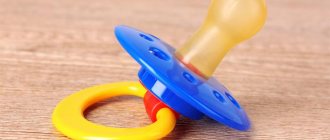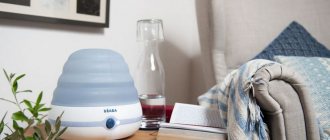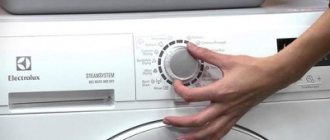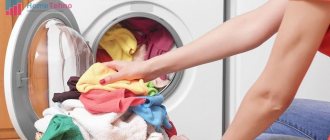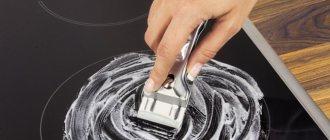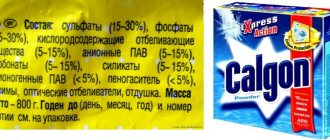A pacifier can be useful
Whether or not to use this children's accessory depends on the mood of the parents and the baby himself. If a child is breastfed on demand, calmly falls asleep without a pacifier, and does not put his fingers in his mouth, why offer him anything else? But if your baby has problems falling asleep, gets restless between feedings, uses the breast instead of a pacifier, a pacifier can become a real lifesaver. A pacifier may also be needed when feeding your baby over time, not only to soothe him between meals, but also to allow the baby to replenish his natural need for sucking. After all, this process is necessary for the baby in the first months of life to ensure normal functioning of the gastrointestinal tract and facilitate the process of digestion and assimilation of food. The pacifier also helps solve another delicate problem for newborns. Namely, it facilitates the passage of gases, thanks to the same beneficial effect of the sucking process on the baby’s gastrointestinal tract. It was in connection with this problem that I at one time began to offer a pacifier. And it really helped. Another positive point is that it is much easier to wean your baby off a pacifier than from the fingers that are always with him. Some time after we gave up the pacifier easily and without problems at the age of 7 months, our son put his finger in his mouth. And we fought this habit long and hard.
Should I give a pacifier to a newborn?
The main task of a pacifier is to satisfy the sucking reflex of a newborn. A lot of rumors and speculation will circulate around this concept. The sucking reflex is formed even before the baby is born.
After birth, the sucking reflex will ensure the normal and proportional development of the jaw apparatus.
The optimal load on the jaws ensures their optimal development - their correct spatial position, the formation of a certain size for the eruption of the entire group of teeth, without crowding.
Problems with the pacifier
Despite the advantages, it is not in vain that people scold the pacifier and, if possible, try to give it up. There are 3 main problems associated with pacifiers.
It is believed that a pacifier may have a negative impact on breastfeeding.
Indeed, during the period of lactation, the nipple can only do harm. Therefore, it is recommended to offer a pacifier to your baby no earlier than one month of age. If the baby is bottle-fed, you can offer him a pacifier right away.
A pacifier can affect your bite.
This is the most common fear of parents. Moreover, even the “correct” shape of the nipple does not guarantee the absence of problems in the future. The main aspect in the issue of bite formation is not so much the shape of the pacifier, but the duration of its use by the baby. If a child does not let the pacifier out of his mouth, the anatomical shape will not help. If it is used only from time to time, most likely, even a round pacifier will not cause harm. Just pay attention to the shape of the bottle nipples. If periodic sucking always affected the bite, all “artificial” people would be susceptible to this.
The baby needs to learn to speak.
Constantly sucking a pacifier can negatively affect speech development. When a baby begins to make his first sounds, he usually likes to listen to himself and tries to use the pacifier less often. If for some reason you see that the pacifier has become a serious obstacle to the development of speech skills, try to reduce the time that the baby holds it in his mouth. Thus, the negative consequences are associated not so much with the pacifier, but with the excessive exposure of the child to it. Everything is good in moderation. It is not enough to decide: “We use a pacifier,” it is important to use it wisely and not offer it to the child every time he gets bored or requires attention.
Baby pacifier: rules of use
The main thing is that the pacifier for newborns is safe; for this it is extremely important to follow basic hygiene rules. The silicone pacifier should be changed every one and a half months, and the latex pacifier at least every 3 months.
At least once a day, the pacifier must be disinfected - boiling. For greater safety, the nipple should have a protective disc and cap.
To prevent the pacifier from getting lost and the baby not being able to swallow it, the pacifier must be attached to a special protective disk, which must be wide enough. The disk cannot consist of many parts - it must be monolithic.
The disk itself should have ventilation holes for air circulation. In addition, you must follow the basic rules for its use:
How to choose a pacifier. What types of pacifiers are there?
Anyone who has ever visited a pharmacy or store and paid attention to this children's accessory will agree that there are a great variety of pacifiers nowadays and they differ not only in color and size, but also in material and shape. And, if with the first two parameters everything is more or less clear: the color, design and pattern can be selected based on your own aesthetic preferences, and the size - based on the age of the child, then with regard to the shape and material, you can often only scratch your head in puzzlement.
Pacifier material: silicone or latex?
Pacifiers are made from two types of materials: silicone and latex. Silicone is a man-made material. It more easily tolerates high temperatures, and, consequently, boiling treatment. In addition, it is more durable - such a pacifier will need to be changed every 3 months. But this material also has a significant drawback - it is less elastic compared to latex and is much easier to chew. Therefore, it is recommended to use such a pacifier before teeth appear. Latex is a natural material made from the sap of the rubber tree. It is less susceptible to mechanical stress and chewing such a pacifier will be a serious task for the baby. In addition, pediatricians note that latex nipples are less harmful for the formation of a correct bite due to greater firmness and elasticity. However, latex has a porous structure that facilitates the rapid “absorption” of harmful substances and their accumulation. In addition, this material is less resistant to processing at high temperatures, so this pacifier will have to be changed more often - about once a month. There is one more drawback to latex pacifiers, which many parents do not know about or find out quite late: latex allergies can occur . Therefore, if, after purchasing a new pacifier, you begin to notice your baby’s nasal congestion, swelling of soft tissues, watery eyes, itching, skin rashes or constant sneezing, it may be the material.
Pacifier shape
As for the shape, very roughly we can distinguish two main ones, not counting the design options: orthodontic and round. A round pacifier is easier for a baby to grasp, but it can have a more negative effect on the formation of the bite if the baby does not let the pacifier out of his mouth. The size of the “ball” in such pacifiers can be different - the larger it is, the easier it is for the baby to hold the pacifier in his mouth. An orthodontic (anatomical) pacifier has less influence on the formation of the bite. This is where its fundamental differences end. What is typical is that all children are different and few manufacturers have seen exactly how the nipple should be positioned in a child’s mouth. Therefore, anatomically shaped nipples can be found in the form of a “droplet,” flattened on both sides, beveled, and others. You should pay attention to asymmetrical pacifiers - beveled and convex on one side. Such a pacifier must be given exclusively with the convex side up. Therefore, it is advisable to choose a similar pacifier with a wide stopper and a recess for the spout, so that when the baby begins to use the pacifier independently, it will be easier for him not to mix up the sides. The child decides which form to choose; he can refuse any orthodontic pacifier in favor of a regular “cherry” and you are unlikely to do anything about it. If parents want to use an anatomically shaped pacifier, a little advice - don’t even offer your baby a round one.
Features of pacifiers made of different materials
Modern nipples for children are usually made of silicone or latex. They differ in color - silicone white, latex yellow. Both nipples are quite durable. But silicone ones are still considered more durable and durable. But they are also tougher. Latex ones are softer and resemble mother’s breasts, but they break down faster. Made from natural rubber, these nipples are elastic and are more popular with babies. They may have their own special taste and smell, and dirt sticks to them more easily.
When it comes to boiling, silicone pacifiers are more heat resistant than latex products. Silicone nipples can be boiled many times, and they are odorless and tasteless. Latex pacifiers are much less resistant to high temperatures and can deteriorate if subjected to prolonged boiling, and therefore they are recommended to be changed more often than silicone ones. So, a silicone pacifier must be changed to another after 5 - 6 weeks of use, and a latex pacifier - after 4 - 5 weeks. If the nipple is damaged, it must be replaced immediately, no matter what material it is made of.
A new pacifier should always be treated. Read the instructions on the package carefully. The service life of pacifiers is also written there. You can boil them, but you shouldn’t do it for too long. Before using for the first time, a new pacifier should be boiled for about 2 - 3 minutes. When storing, pacifiers should be kept away from batteries and the sun to prevent their deformation. You should wash your pacifier at least once a day in warm water and soap and never lick it. To make the pacifier less dirty, it is recommended to hang it on a special chain with a clothespin, which can be easily attached to the baby’s clothes.
When the child reaches the age of six months, many mothers already stop sterilizing baby dishes and pacifiers. And this is quite reasonable. From now on, cleanliness can be maintained by simply pouring boiling water over the bottle and pacifier.
Well washed and dried pacifiers are stored in special transparent containers.
Babies will enjoy both latex and silicone nipples. But when the child has teeth, it is recommended to give him latex pacifiers, because silicone ones are too hard and can easily deform the teeth and injure the palate.
When choosing a pacifier, also pay attention to its size and shape. The size, of course, should be suitable for the baby’s age. Babies need smaller nipples. The age is usually indicated on the packaging.
Pacifiers also vary in shape: they can be round, oval or orthodontic with a thin curved neck and a beveled tip. The latter are similar to the mother's nipple. To form a correct bite, experts recommend purchasing a pacifier with a flattened end or an orthodontic product with a sloping bottom surface.
Watch your baby. Perhaps he will like some pacifier and suit it better than others. Therefore, I advise you to try different nipple shapes. In addition, there are nighttime pacifiers and pacifiers with a glowing ring for the dark.
How to avoid becoming a “victim of a lost pacifier”
Parents who have used a pacifier know that in addition to the “global” problems associated with it, there is another, seemingly insignificant difficulty that can be encountered at any time. Pacifiers often get lost, especially if the baby is used to falling asleep with it. I will never forget searching for a pacifier at 3 am. Therefore, to make your life easier, buy a pacifier chain right away. You can simply hook it onto a bed or stroller, hang it around your child’s neck, which will protect your favorite item from falling or getting dirty, and will save your mother from searching at night.
It is better not to use strings or elastic bands for these purposes - they get tangled more easily and can wrap around the child’s neck or arm. And one more piece of advice. The baby becomes very attached to his “favorite” nipple. When it gets damaged, lost, or needs to be replaced, a serious problem can arise. Therefore, it is advisable, after you have decided on “your” pacifier, to prepare one or two more exactly the same “in reserve”. It is important to note that the baby gets used not only to a certain shape, but also to a specific pattern and color. Therefore, it is highly advisable to find a spare pacifier that is an exact “clone” of your favorite one.
Precautionary measures
The pacifier will be in the child’s mouth, therefore, it is worth taking care of the baby’s safety and taking certain precautions: Before giving the child a pacifier for the first time, it must be boiled for 2-3 minutes. During the day, a baby's pacifier can end up on the floor, on the sofa, and in dirty hands, so you should carefully monitor cleanliness. Protective cases help to partially save the pacifier from contamination, but even they do not completely protect the product. Therefore, heat treatment should be repeated periodically. If the pacifier falls on the floor, do not lick the pacifier - it is better to rinse it with boiled water. On the street you can use mineral water, but it is better to replace the pacifier with a spare one. If cracks appear on the pacifiers, they should be replaced immediately.
How to wean a child off a pacifier
The sucking reflex begins to fade by six months. If you catch this moment, parting with the pacifier will be quite simple. Based on my experience and the experience of friends, if you postpone the time of giving up your favorite pacifier until the age of one year or older, it will be more difficult than in the period from six months to 9-10 months. The baby grows, and along with him, his capabilities and needs in exploring the world around him and communicating grow; if you shift the focus to other interesting things, the child will soon forget that the pacifier was something special. Teething can also be an excuse to give up the pacifier. If you choose a good teether during this period, the baby can completely switch his attention to it. My niece did just that, and the pacifier's disappearance was painless.
There are also general recommendations on how to make it easier to cope with parting with a pacifier:
- do not put it in a visible place;
- there is no need to offer a pacifier once again if the baby is simply upset, it is better to calm him down in another way;
- gradually change your bedtime rituals, find a substitute toy, read fairy tales, sing songs;
- remove the pacifier from the baby's mouth during sleep;
- play and talk with your baby more often, try to distract his attention.
Moreover, if the baby is capricious, requires a pacifier, is sick or cannot survive the painful process of teething without the usual means of calming, you should not insist. It is better to gently try again later and continue to replace the pacifier with other interesting activities. A one-time refusal of a pacifier in the event of its loss will be easier to explain to an older child, but in this case there may be more difficulties. There are many tips and tricks. The pacifier can “go for a walk”, it can be given to someone younger, “lost”, etc. You can come up with a game with the pacifier itself, if the child does not want to part with it - you can hide it and find it, throw it somewhere, roll it down the slide, etc. So the baby will gradually begin to perceive it not only as a means of calming, but also as a toy, and the children’s attention quickly switches from one object to another. You can tie a pacifier, for example, to a crib “like a dog.” And in order to suck the pacifier, the baby will have to be distracted or sit still. For curious children, this can be both a fun game and an incentive to part with the pacifier for research activities. Which trick to use depends on the child. One friend used a pacifier as a Christmas tree decoration, and another offered the child an “equivalent exchange” for a new toy. The main thing is to show your imagination and everything will work out.
